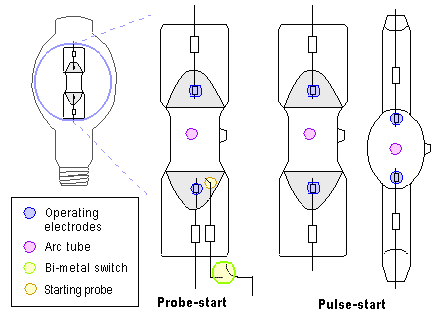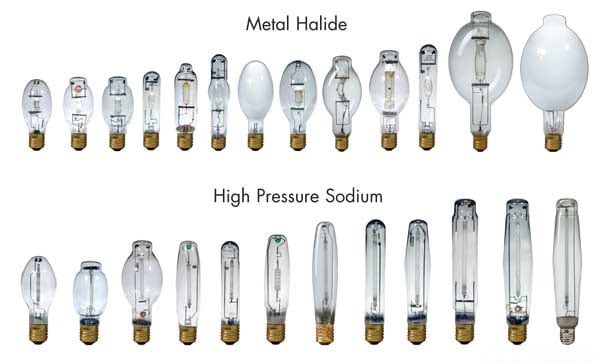JAMES Pulse Start Metal Halide Lamps offer an optimized metal halide system for greater efficiency and lumen maintenance.
Metal Halide lamps are electrically similar to mercury
designs except that they require a higher starting voltage from the ballast. In order to
provide this, the ballast has to have larger magnetic components, which have the effect of
adding cost to the system and using more energy.
An important element in the design of
the arc tube is the fill pressure. Metal Halide Pulse Start Ballasts Increasing the fill pressure results in better electrode
performance, improved lumen maintenance and longer life but on the negative side, it
makes starting the arc more difficult using a traditional magnetic ballast. Therefore, the
designer has to make compromises by limiting the fill pressure to be able to start the arc
while still providing good lamp performance.
In a “Probe Start” lamp, a starter probe is
installed near one of the main electrodes to help in gas ionization during the first few
seconds of the starting cycle. After a short time, this starter probe is turned off using a
bimetal switch within the lamp that functions with the heat generated within the arc tube.
Traditional metal halide (MH) lamps use probe-start technology. Metal Halide Pulse Start Ballasts Three electrodes are present in the arc tube of a probe-start MH lamp: a starting probe electrode and two operating electrodes. To start the lamp, a discharge is created across a small gap between the starting probe electrode (also called the starter electrode) and the operating electrode. Electrons then jump across the arc tube to the other operating electrode to help start the
lamp. Once the lamp is started, a bi-metal switch removes the starting probe electrode from the circuit.


